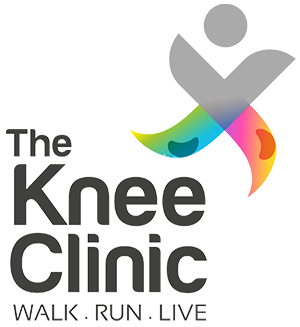Anterior Knee Pain in Athletes

Pain on the anterior aspect of the knee (under and around the kneecap) is seen frequently in young and physically active people. At our speciality clinic, we see about 20 to 25 new cases per 100 patients per year. The palette of complaints is varied, from mild short-term pain to long-standing, load-dependent pain. It can range from pain during loaded bending of the knee (as in squats or lunges) to discomfort towards the end of a long-distance run.
The knee joint includes the femur (thigh bone), tibia-fibula (shin bones) and patella (kneecap in front) articulating with each other. Off note, almost all issues arising out of the patella-femoral composite are notoriously difficult to diagnose and treat! Over the years, various names have been used including chondromalacia patellae, patellar chondropathy and anterior knee pain. The current consensus is to refer to these complaints as ‘#PatelloFemoralPainSyndrome’ (#PFPS).
It is assumed that PFPS has a favourable prognosis. However, in an active athletic individual, this assumption is to be questioned. A number of studies show that even after several years, 30-50 percent of patients with patellofemoral pain are not free of symptoms.
The #etiology of anterior knee pain seems multifactorial, explained by three models.
1. Mechanical – malalignment of the limb, abnormal position and movements of the patella on the femur are contributory.
2. Neuromuscular – synergistic activation of all muscles surrounding the knee is needed and the lack thereof can lead to symptoms.
3. Biological – Soft tissues around the patella can be loaded physiologically within a pain-free zone. Outside this physiological zone (envelope of function), overloading of structures can occur. In this situation, tissues can literally fail or may not sufficiently recover from repetitive overload. This could eventually lead to permanently reduced capacity and therefore a smaller ‘envelope of function’.
Several structures around the patella include pain receptors (lateral retinaculum, infrapatellar fat pad, joint capsule and subchondral bone) but none of them has been found as a single cause for anterior knee pain.
PFPS is in fact still a #diagnosis ‘by exclusion’. The patient’s history and examination along with the exclusion of other diagnoses are sufficient in order to outline the diagnosis. The #symptoms are mainly insidious – often a period of excessive load like increased sports activities may be associated with the pain and sometimes a mild direct trauma to the kneecap appears to be the beginning of the complaints. Apart from anterior knee pain, crepitus (clicks or cracks) is a common complaint. On examination, effusion (swelling) is rarely found and actually indicates another pathology. Pain is mostly prominent at the medial and lateral borders of the patella and sometimes also at the inferior pole of the patella. Lateral thigh pain often accompanies #KneePain. Often, a simple X-ray (skyline view of the knee) is sufficient to document patellar tilting (abnormal movement or position). Unfortunately, more often than not patients are subjected to #MRI scans by #OrthopaedicSurgeons hunting for a diagnosis. We generally reserve extensive investigations for other specific issues (anything other than PFPS!).
The general #treatment approach is to inform patients about the favourable course and good prognosis of complaints, to prescribe rest, instruct on avoidance of activities which are provocative for pain and referral to a physiotherapist. Physiotherapy is a broad concept and treatment for PFPS often consists of combinations of ‘treatment modalities’ like massage, muscular electrostimulation, exercise therapy or patellar taping and orthotics. During recent years, much interest has focussed on
1. the (additional) effect of muscle-strengthening exercises for the hip and gluteal muscles combined with quadriceps strengthening.
2. Proprioception (balance) training.
3. Work on the core and kinetic chain.
Although there is a general agreement that a conservative strategy for PFPS should be followed, there are specific cases in which surgical intervention may be considered. Evident patellar malalignment, anatomical ‘maltracking’ problems and recurrent patellar dislocations must be treated surgically.
In #conclusion, #PatellofemoralPain remains a common problem in primary care and sports medicine. The diagnostic and therapeutic approach to these complaints has changed during the last few decades. It has become clear now that there is no direct relationship between pre-existing anatomical or radiological abnormalities and patellofemoral pain. Based on recent research, an active approach through intensive (supervised) exercise therapy is shown to be more effective for patients with PFPS than a ‘wait and see’ management. Although patellofemoral pain can be prolonged and sometimes debilitating, it remains important to be cautious with regard to surgery. In patients with recurrent patellar dislocation, clear instability or protracted patellofemoral pain, a thorough analysis may be executed, with an ensuing ‘a la carte’ surgical plan individualised to the patient.
For consultation, please contact #TheKneeClinic on ph +91 9136401071 or click on the website link
https://www.thekneeclinic.in/contact.php
Recent Posts
-
 Can the Coronavirus affect my bones and joints?08 Mar 2024
Can the Coronavirus affect my bones and joints?08 Mar 2024 -
 Should One Avoid The King Of All Exercises- SQUATS?08 Mar 2024
Should One Avoid The King Of All Exercises- SQUATS?08 Mar 2024 -
 Anterior Knee Pain in Athletes08 Mar 2024
Anterior Knee Pain in Athletes08 Mar 2024 -
 Managing Osteoarthritis From the Kitchen08 Mar 2024
Managing Osteoarthritis From the Kitchen08 Mar 2024 -
 What is gout?08 Mar 2024
What is gout?08 Mar 2024 -
 What is Rheumatoid Arthritis?08 Mar 2024
What is Rheumatoid Arthritis?08 Mar 2024 -
 Exercises07 Mar 2024
Exercises07 Mar 2024 -
 What is Calcium and what does it do?07 Mar 2024
What is Calcium and what does it do?07 Mar 2024
